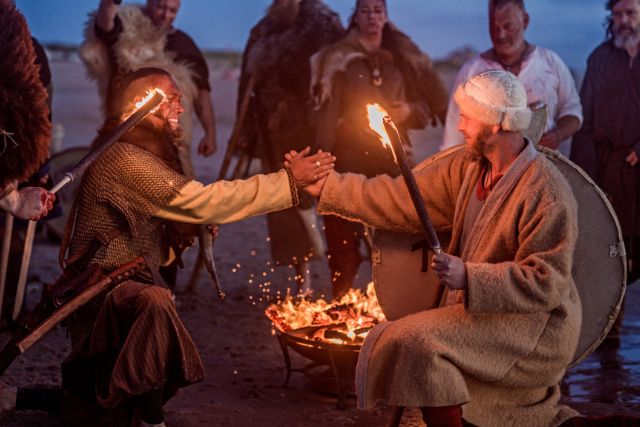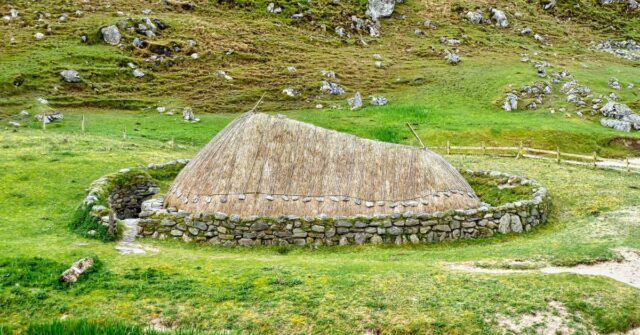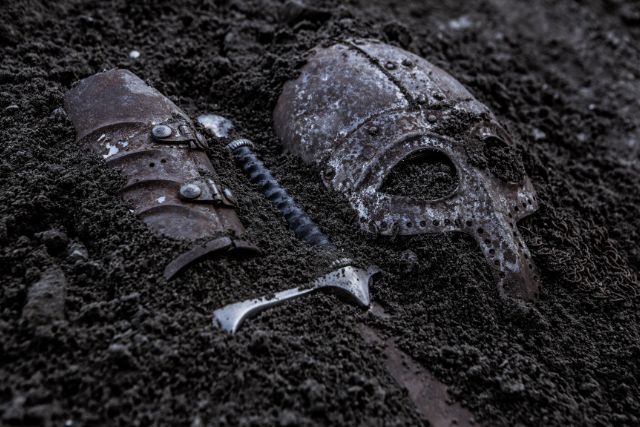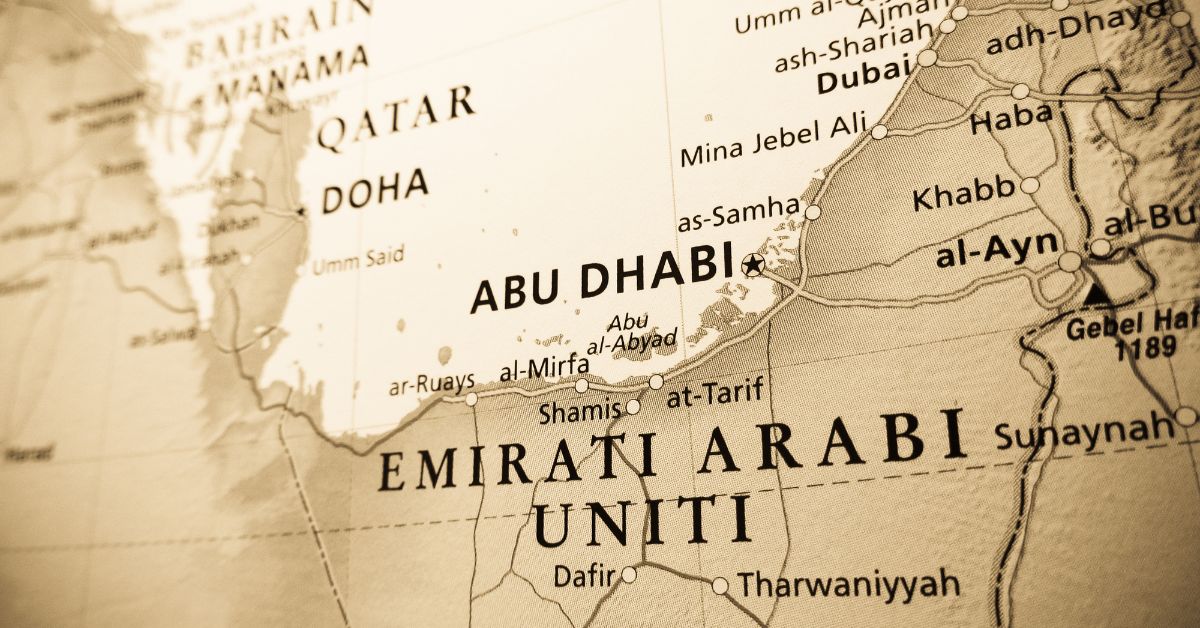The Vikings, often depicted as fierce raiders from the north, had surprising connections with the Arab world.
This blog post delves into these interactions, exploring trade, cultural exchange, and archaeological discoveries. Join us as we uncover the fascinating history between these seemingly disparate cultures.
Introduction
The connection between Vikings and the Arab world is a tale of unexpected encounters, rich cultural exchanges, and significant historical impact.
From trade routes to shared folklore, the relationship between these two cultures offers a unique perspective on medieval history.
The Historical Context
The interactions between Vikings and the Arab world were not merely about conflict but also about cooperation and mutual benefit.
These connections spanned centuries and included significant trade and cultural exchanges.


The Viking Age and the Arab World
The Viking Age, spanning from the late 8th to the early 11th century, was a period of significant exploration and expansion.
Vikings, originating from Scandinavia, ventured far beyond their homeland. The Arab world, flourishing under the Abbasid Caliphate, was a hub of trade, culture, and science during the same period.
The interactions between these two worlds were driven by commerce and curiosity.
Initial Encounters: Raids and Trade
Early encounters between Vikings and Arabs were marked by raids. In 844, Viking raiders attacked Muslim Spain, targeting the rich cities of Lisbon and Seville.
These raids, though initially destructive, laid the groundwork for future trade. Over time, Vikings shifted from raiding to trading, recognizing the wealth and opportunities in the Arab world.
Major Viking Raids on Muslim Spain
The Vikings launched several significant raids on Muslim Spain. The first major raid occurred in 844, with a fleet of 54 ships attacking and plundering cities along the coast.
A second raid in 859 saw an even larger fleet, demonstrating the Vikings’ growing interest in the region’s wealth.
Despite fierce resistance from the Muslims, these raids showcased the Vikings’ naval prowess and opened new avenues for interaction.
Transition from Raiders to Traders
As the initial frenzy of raiding subsided, Vikings began to recognize the benefits of peaceful trade. They established trade routes that extended from Scandinavia to Constantinople and Baghdad.
The lure of Arab silver and luxury goods was a significant motivator, transforming former raiders into seasoned traders.


Cultural Exchanges and Influences
The interactions between Vikings and Arabs went beyond mere trade. They involved a deep exchange of cultural practices, art, and storytelling that left lasting impacts on both societies.
Art and Architecture
The blend of Islamic and Scandinavian influences is evident in Viking art and architecture.
The intricate designs and patterns from the Arab world found their way into Viking craftsmanship, creating a distinctive fusion of styles.
Islamic Influence on Viking Art
Islamic art, known for its intricate geometric patterns and calligraphy, influenced Viking artisans. Items like the Oseberg Ship feature carvings with motifs reminiscent of Islamic designs.
These influences highlight the Vikings’ appreciation for the artistic traditions they encountered through trade and interaction.
Examples of Architectural Fusion: The Great Mosque of Cordoba
The Great Mosque of Cordoba, originally built in the 8th century, is a masterpiece of Islamic architecture. When Viking settlers arrived in the 9th century, they contributed to its expansion.
The resulting structure is a fascinating blend of Islamic and Viking architectural styles, showcasing the creative synergy between the two cultures.
Storytelling and Folklore
Storytelling was a significant part of both Viking and Arab cultures. The exchange of stories and folklore helped bridge cultural gaps and foster mutual understanding.


Shared Narratives: Beowulf and Ali Baba
The epic tale of Beowulf shares striking similarities with the story of Ali Baba and the Forty Thieves. Both narratives feature heroes battling mythical creatures and overcoming great challenges.
These shared stories highlight the deep cultural exchanges that occurred between Vikings and Arabs, enriching the literary traditions of both societies.
Impact on Values and Societal Norms
The exchange of stories and folklore between Vikings and Arabs influenced their respective values and societal norms.
Shared narratives helped shape their worldviews, emphasizing bravery, honor, and the battle between good and evil.
This cultural exchange fostered a sense of camaraderie and mutual respect, despite their differences.
Archaeological Discoveries
Archaeological discoveries provide tangible evidence of the connections between Vikings and the Arab world. These findings reveal the extent and nature of their interactions.
Arabic Inscriptions on Viking Artifacts
One of the most intriguing discoveries is the presence of Arabic inscriptions on Viking artifacts. These findings suggest a deeper level of cultural integration and influence.
Discovery of Kufic Script on Burial Clothes
In 2017, Swedish researchers discovered Arabic Kufic script on Viking burial clothes. The inscriptions, spelling out words like “Allah” and “Ali,” indicate a significant Islamic influence on Viking burial customs.
This discovery challenges previous assumptions and suggests a more profound connection between the two cultures.
Interpretations and Debates
These findings have sparked debates among historians and archaeologists.
Some argue that the inscriptions reflect the Vikings’ respect for and integration of Islamic traditions, while others believe they were purely decorative.
Regardless, the presence of Arabic script in Viking graves underscores the extent of cultural exchange.
Significant Finds: Coins and Trade Goods
Numerous Arabic coins and trade goods have been found in Viking settlements, highlighting the extensive trade networks that existed between the two cultures.


Viking Silver and the Arab World
Vikings were particularly interested in Arab silver, which was highly valued in their economy.
Arabic silver coins, known as dirhams, have been found in large quantities in Viking hoards, indicating robust trade relations.
Artifacts from Viking Graves
Artifacts found in Viking graves, including silk fabrics and ornate jewelry, point to the influence of Arab trade.
These items were not just symbols of wealth but also indicators of the cultural connections between Vikings and Arabs.
Religious and Social Influences
The interactions between Vikings and Arabs also had significant religious and social implications. These influences are evident in various aspects of Viking life.
Religious Practices of Vikings and Arabs
Religious beliefs played a crucial role in shaping the interactions between Vikings and Arabs.
While the Vikings practiced their traditional Norse religion, they were also exposed to Islam and other faiths through their contacts with the Arab world.
The Role of Islam in Viking Society
Islamic practices, such as charity and pilgrimage, influenced some Viking communities.
The presence of Islamic artifacts in Viking graves suggests that some Vikings may have adopted certain Islamic customs, reflecting a level of religious syncretism.
Diversity and Tolerance in Religious Beliefs
The Vikings’ exposure to different religions through trade and cultural exchange fostered a sense of religious tolerance.
This openness allowed them to engage with diverse cultures and adopt practices that resonated with their own beliefs.
Influence on Viking Burial Customs
Islamic burial traditions left a mark on Viking funeral practices, as evidenced by recent archaeological discoveries.


Islamic Burial Traditions and Viking Practices
Elements of Islamic burial customs, such as the use of silk garments and specific grave goods, were incorporated into Viking burials.
This integration reflects the broader cultural influence of the Arab world on Viking society.
Impact of Quranic Teachings
Quranic teachings about the afterlife and the use of luxurious materials in burials may have influenced Viking burial practices.
The presence of Arabic inscriptions on burial clothes suggests that some Vikings were aware of and influenced by these teachings.
The Legacy of Viking-Arab Interactions
The interactions between Vikings and Arabs left a lasting legacy, shaping the cultural and historical landscape of both regions.
Long-Term Cultural Impacts
The cultural exchanges between Vikings and Arabs had enduring effects, visible in art, architecture, and societal norms.
Enduring Art and Architectural Styles
The fusion of Islamic and Scandinavian art and architecture created styles that endured long after the Viking Age. These influences can still be seen in various historical sites and artifacts across Europe.
Influence on European and Islamic Societies
The exchange of ideas and practices between Vikings and Arabs enriched both European and Islamic societies.
The spread of technology, art, and literature across these cultures highlights the profound impact of their interactions.


Modern Perceptions and Historical Significance
The relationship between Vikings and Arabs continues to captivate historians and the public, offering valuable insights into the interconnectedness of medieval societies.
Reevaluating Historical Narratives
Recent discoveries and research have led to a reevaluation of historical narratives, highlighting the complexity and depth of Viking-Arab interactions.
These findings challenge traditional views and offer a more nuanced understanding of medieval history.
Legacy in Contemporary Culture
The legacy of Viking-Arab interactions is still evident in contemporary culture. The exchange of ideas and goods between these two cultures laid the groundwork for a more interconnected world.
Modern reconstructions of Viking history often highlight their interactions with the Arab world, shedding light on the rich cultural exchanges that took place.
Conclusion
The unlikely connection between Vikings and the Arab world is a fascinating chapter in medieval history.
From trade and raids to cultural and religious influences, the interactions between these two cultures were complex and multifaceted.
Archaeological discoveries continue to reveal new insights, challenging our understanding and appreciation of these historical connections.
As we uncover more about this intriguing relationship, it becomes clear that the Vikings and the Arabs left a lasting impact on each other’s societies, shaping the course of history in profound ways.











